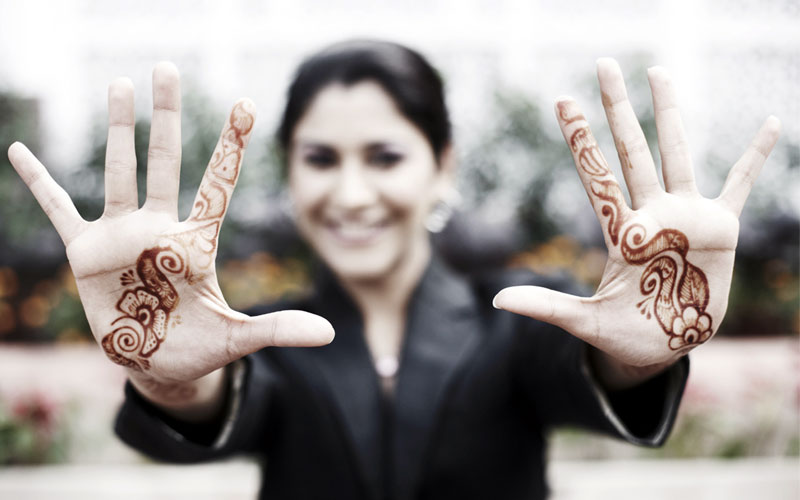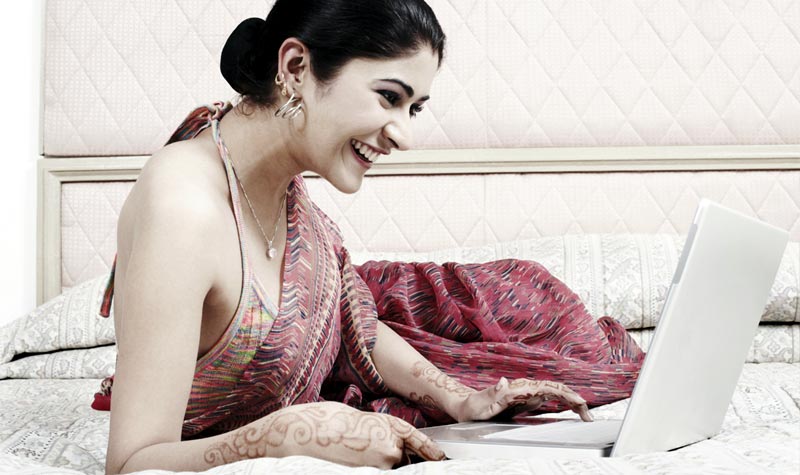Do you know Henna has been used for centuries and has formerly been used as a medicinal herb? However, the most primitive records of the usage of this leaf come from Egypt. Traces of henna dye are found in the hair and nails of the mummified body.

Irrespective of a long history of usage, the terms Henna, and Mehndi create confusion in many people. Is henna and Mehndi same? If not, what is the difference? Let us find out.
What is Henna?
Henna is a flowering plant belongs to family Lythraceae. It is a large shrub that can reach the height of 6 meters. When the plant is full-grown, it develops thorns which keep the cattle and animals away from eating the plant.
The leaves of a henna plant once dried out can be ground into a fine powder. Once water is added to henna powder you get a paste. This paste is commonly called Mehandi and can be used to color the hair or apply to the skin for creating attractive designs.
How Mehndi differ from Henna?
Mehndi and henna are two terms that depict the same thing. Here goes the simplest explanation, Mehndi is the Indian word for henna (actually it is derived from the Sanskrit name Mendhika) and Henna is the Arabic word for Mehndi. No wonder mehndi and henna are often used interchangeably and there is no wrong in it. Continue reading to understand how the term is used in different point of views.
In another aspect, we can say Mehndi is the art of applying Henna to the skin (of hand and feet) creating a wonderful design. Here, henna is the medium that used in Mehandi, a form of body art.
What is the cultural importance of Mehndi?
While for the western world, mehndi is nothing, but a dye used in body arts, for people in India and Pakistan, and the Middle East, mehndi is an unavoidable part of their culture.
The application of mehndi on hands, feet, and hair is part of the Islamic culture. It is said that Prophet Muhammad himself used mehndi on his hair and beard and advised Muslims to put mehndi on the hand, feet, hair, and beard. He also mixes henna leaves in water and gives it to people who fell ill. Some researchers even believe that it was the Mughals who introduced henna to India

Mehndi/henna is very closely connected to Indian culture. Its uses are mentioned in manuscripts dated 9000 years back. It has been used for centuries in India as a medicine, to beautify and to bless. A Mehndi ceremony is an inevitable event in almost all sorts of wedding, like, Hindu, Muslim, Sikh, etc.
How to use the Henna Leaves?
When you state what you put in the hair is henna and what you put in the body is Mehndi, there are a few things to consider.
When you color the hair you will add amla powder, lemon juice, curd, black tea etc. to the henna powder to make it more beneficial for the hair. Similarly, when you make Mehandi from henna powder you will add eucalyptus oil, lemon juice, and clove oil to enhance and long lasting of the color.
In short, we rarely use the leaves of a henna plant alone for hair or body. Depending on the potency of the dye in the leaves, the color of henna / Mehndi can range from orange-red to dark brown if put in its pure form in hair or body.
Traditional and Medicinal Uses of Henna plant
Not only the leaves of the henna plant but also its seeds and bark are of high medicinal value. It is one of the important ingredients in many Unani and Ayurvedic medicines.
1. Used to treat Rheumatic and arthritis pain
Massaging with henna oil helps to relieve the rheumatic and Arthritis pain.
2. Relieves headaches
The juice of this medicinal plant, if applied on the head and forehead, will help to get rid of the nasty headaches caused due to exposure to hot sun.
3. Helps to treat dysentery
The bark of the plant is incredibly useful in the treatment of dysentery. After powdering the seeds of the henna plant, add little ghee and roll it into small balls. Take these balls along with water. This is an effective remedy for dysentery.
4. Used to treat skin conditions
- Good for hair and skin. Helps in getting rid of dandruff and thereby maintaining a healthy scalp.
- It clears eczema and also kills ringworm
- Henna has excellent cooling properties and therefore used for the treatment of inflammation, burns, wounds, and bruises on the skin. It is highly beneficial in combating the prickly heat
- The bark can help in the treatment of various skin diseases. Even the early stages of leprosy can be effectively treated.
- Henna can very successfully use as a sunblock.
- Henna is excellent in treating sunburn and other rashes in the body.
- It used for the treatment of fungal infections like athlete’s foot.
5. Helps in treating liver disorders
Henna bark and root are effectively used in treating liver enlargement and jaundice. It is consumed either as in powdered form or as a decoction.
Henna and Mehndi Difference FAQs
1. What is the difference between Henna and Mehndi?
Henna is a natural dye from the leaves of the Lawsonia inermis plant. Mehndi refers to the cultural practice of applying this dye to skin in decorative patterns. In simple terms, Henna is the product, and Mehndi is the art.
2. Are Henna and Mehndi the same thing?
No, they are not the same. Henna is a plant-based dye used for coloring. Mehndi is the term for creating designs with Henna paste, often on hands and feet during celebrations or ceremonies.
3. Why is Mehndi important in weddings and festivals?
Mehndi represents joy, beauty, and blessings in many cultures. It is a key tradition in South Asian and Middle Eastern weddings. Women apply it during festivals like Eid, Diwali, and Karva Chauth to enhance their celebrations.
4. Can you apply Mehndi without Henna?
Traditional Mehndi always uses Henna paste. Today, some people use synthetic substitutes, but Henna is safer and natural. Most cultural practices still rely on authentic Henna for its rich color and traditional significance.
5. Why do Mehndi designs differ across cultures?
Cultural traditions shape Mehndi designs. Indian patterns features paisleys and flowers. Arabic styles focus on bold floral patterns, while African designs use geometric shapes. Each style reflects the region’s history and artistic identity.
